Getting Ready for the Coming Bio-Economy
by Lifeboat Foundation Scientific Advisory Board member Scott Borg, 2000.
The Arrival of the Bio-Economy
The existing landscape of business is about to undergo an enormous upheaval. The new terrain that will emerge from this upheaval will be different from anything we’ve seen before. Many familiar structures will still be there, but they will be split apart and re-arranged. Gigantic new landmarks will appear, supplanting the old ones. The reason for this coming upheaval is an unprecedented revolution in technology. Its effects will probably be greater than even the information technology revolution. It will take us beyond computers, beyond the communication revolution, beyond the networked economy.
People have been slow to recognize the full extent of this technological revolution, because it is not coming from one discipline. Some people have described what is happening as “the life sciences revolution”. But it goes much deeper and encompasses much more than the life sciences.
Many of the key developments are coming from the disciplines that deal with molecules. In fact, it is tempting to say that the new technology will once again put physical materials and physical processes at the center of our economic development. But the most important research efforts are not just concerned with the physical aspects of the molecules they create and study. They are equally concerned with the ways molecules embody information and with information processes carried out at a molecular level.
A crucial aspect of what’s happening is that physical processes and information processes are merging at small physical scales. We’ve long been used to this where DNA is concerned. We recognize that any operation involving DNA is both a physical process and an information process. But now we’re seeing a similar approach being taken with a host of other molecules. Researchers dealing with everything from pharmaceuticals to ceramics have recently been growing accustomed to thinking of those materials in terms of information.
Similar changes have been also taking place in disciplines that deal with things larger and more diffuse than molecules. Even engineers designing physical production lines are increasingly aware that both their process and their product consist largely of carefully deployed information. In fact, instead of treating matter and information as different kinds of things, we are moving rapidly toward a time when information processing and material production will become a single activity. Matter will be treated simply as bits of information to be manipulated. Fabricating something will be seen mostly as a problem of getting the right bits of information into the right order.
The most powerful new techniques for manipulating matter as though it were information will initially be processes we describe as “biological”. We will start by using vats and herds of genetically engineered organisms to make things we had previously made using complex factories and chemical processing facilities. But soon processes we describe as “mechanical” will be integrated into these biological systems — so smoothly that the distinction between biological and non-biological processes will no longer apply.
As these new processes become commercially viable, old products that were previously scarce will become plentiful. Indeed, any product that can be made out of relatively common elements should be no problem to manufacture at all. Diamonds, of a quality equaling or surpassed anything in nature, will probably be turned out quite cheaply in sizes inconceivable in the past. Medicines, tailored to specific immune systems, will be synthesized rapidly to order. These kinds of substances, after all, are just rearrangements of commonplace atoms, like carbon. As we become increasingly able to manipulate matter at the molecular level, such products will be among the first benefits.
Meanwhile, new products will be created with amazing new properties. Although these products will be made of the same atoms, our increasing ability to place these atoms where we want them will allow us to control the fine-grained structure of materials as never before. One consequence is that we will be able to infuse materials with minute physical and biological mechanisms. This will allow products to respond and adapt to the way they are used — not just at a gross physical level, but at a molecular level. The resulting materials won’t just adapt passively, like clay receiving an impression. They will adapt actively, like living creatures. What we now think of as micro-processing will increasingly be diffused throughout the material world.
This is the bio-economy. Bits of it have already arrived. The rest of it will be arriving very soon.
Oh, My God, I Think It’s Alive!
Grasping the implications of these changes is a huge challenge. It’s obvious that the landscape for business will be very different. But it is far from obvious what it will look like. To orient ourselves, we will need a sense of what is bringing on the new features and where they are likely to emerge. This is something we can make a start at achieving by drawing on contributions from a diverse collection of scientists, business people, engineers, and other creative thinkers assembled by the Cap Gemini Ernst & Young Center for Business Innovation in October 2000. Although the viewpoints represented were diverse, the overall vision of the new landscape that emerged from the discussions was surprisingly coherent.
Perhaps the most startling and important thing to mention, as we begin describing this new bio-economic landscape, is that it seems to be alive. Christopher Meyer and Stan Davis, the authors of Blur, have pointed out that this new technological era could even be called the “alive economy”. At every juncture, there is a sense of things initiating their own behavior, modifying their behavior, and, in general, doing things that weren’t specifically part of their design.
The most familiar examples are the systems intentionally engineered to learn from our behavior. There are now cars, personal computer applications, and household appliances that will modify their future behavior on the basis of your past behavior, so that they anticipate your preferences and prepare themselves for what you are likely to do next. There are gasoline pumps, being test marketed, that not only greet you by name, when you insert your credit card, but also recommend other businesses and local attractions, selecting them on the basis of the time of day, whether you’re from out of town, and whatever else the system knows about you. These systems adjust to our responses, so that they become increasingly able to anticipate our needs.
Other physical systems are capable of innovative learning at an even more sophisticated level. Meyer delights in describing a communications system now under development that allows an automobile to adjust its traction controls with the aid of a remote computer, while it is in the midst of a skid. In fractions of a second, the remote computer generates a model of the car’s interaction with its physical environment and calculates appropriate corrective measures. Even more remarkable, the central computer system will eventually take account of the data collected from each car of that type, so that, as more cars skid, the system will become better able to make the necessary adjustments in all its cars. Each time the computer models have been substantially improved, the computer will automatically beam a software upgrade to every car in the system. In effect, each automobile will be constantly learning, not just from its own experiences, but from the experiences of all the other participating automobiles. What’s more, the system will be learning new things its designers couldn’t have foreseen.
Remarkable though these systems may seem, they are actually among the simplest examples of the new technologies that are blurring the distinction between living and non-living things. This is because they operate on a relatively large scale and within well-defined physical structures. A subtler and more complex example would be the recent computer viruses and the latest technologies for hunting them down and destroying them. Both of these involve numerous, small packet-like programs that disperse and operate separately from each other. As they operate, they spread, reproduce, modify themselves, and carry out tasks, almost as though they were independent living creatures.
The effect of these various life-like activities is to make the behavior of many non-living systems “reflexive”. Rather than wait for a designer to alter their behavior, the systems are altering their own behavior. In other words, they are doing things that constantly prompt the prefix “self-“. They have become self-managing, self-organizing, self-correcting, self-extending, self-catalyzing, even self-replicating. They are making active use of feedback loops to examine the effect of their own past actions and to modify their future actions. This constant reflexive activity is a major source of innovations in these systems. Equally important, it gives the innovations a purpose or direction that is to some extent determined by the system itself.
Developments of this kind are not something the science, the engineering, and the business theories of the past have prepared us for. The mechanistic sciences most of us were taught as children went to great lengths to stamp out the last traces of vitalism, teleology, spontaneous generation, and any other doctrine that seemed in danger of suggesting independent spirits might inhabit inert matter. Yet everywhere we look along the frontiers of technology, physical systems are exhibiting properties that are quite remote from what we think of as inert.
To do full justice to this crucial feature of the new economy, we need to accept the fact that biological organisms are not the only things capable of behavior we associate with life. Stuart Kauffman, the theoretical biologist, has gone so far as to propose a new definition of life that would encompass non-biological things. He suggests that we simply consider any “autocatalytic, autonomous agents” to be living things. By “autocatalytic”, he means things that can perform work and replicate themselves. By “autonomous”, he means things that can do this with no outside help or instructions, apart from what was necessary to create the original, ancestor entity.
This definition might include many things we would not want to describe as “living”. But by doing so, it draws attention to the fact that non-living things can exhibit many properties that we have been in danger of recognizing only in living things. Non-living things, like living things, can interact with their environment in ways that change both. More strikingly, collections of non-living things can spontaneously organize themselves into larger systems that display a high degree of order. Often the overall configurations and other emergent features of these larger systems could not have been predicted from the components alone. Finally, if they are sufficiently complex, the non-living things and the systems into which they organize themselves can undergo a kind of evolution over time.
Tip #1: Learn to Let Things Operate
Slightly Out of Control
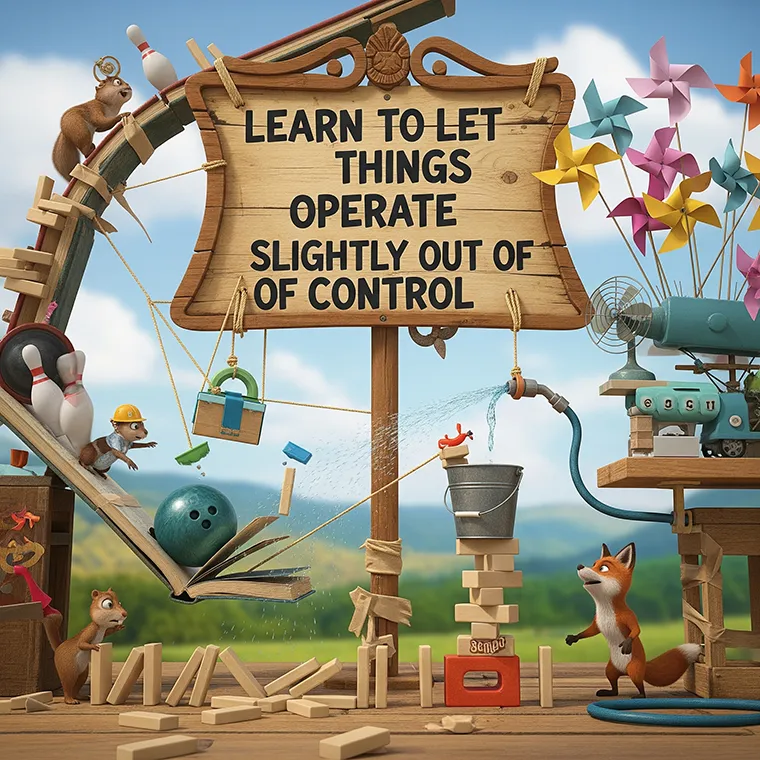
Learning to deal effectively with systems that behave like living things means learning to accept a considerable degree of disorder or unpredictability. Whatever else it is, life is controlled chaos — as anyone who has raised children can testify. This chaos can be managed, but it can’t be eliminated. And even if you could eliminate it, you wouldn’t want to, because it is out if this chaos that the most valuable things arise.
The first mottos for anyone dealing with systems that seem alive are, therefore, very simple: Don’t try to control what you can’t control. Don’t try to plan what you can’t plan. And more than that: Allow uncertainties. Give each system room to learn. Make spaces in which useful things can happen.
For managers overseeing systems that behave as though alive, this need to accept uncertainties can be very unnerving, but it is also exciting. Eric Clapton captured the predicament when he described what it was like to start performing a song with his early band Cream: “We knew we were going to come out the other end together, but we had no idea how we were going to get there, or what we were going to be doing in the meantime.” Often what looks like disorder is really new kinds of order in the process of emerging. An effective manager needs to recognize the new possibilities and the new kinds of order that will emerge from the barely controlled chaos. Then the manager needs to seize on the better prospects and give them the support they need to come to fruition.
Many companies, especially in the chemical and pharmaceutical industries, are already applying these strategies very successfully in their research programs. Instead of taking a “rational design” approach, carefully selecting the molecules they will test, the new researchers will randomly generate molecules that have some of the qualities they are looking for. Then they will use further random processes to explore combinations that they might not have otherwise investigated.
Other companies, especially some of the high-tech incubators and venture capitalists, are applying these same strategies successfully in their business development policies. Instead of employing stringent criteria for choosing investment candidates, or trying to pick the absolute best prospect in a given business category, they will purposely fund a range of enterprises in a general business area. Then when these enterprises have had a chance to operate, the investing business will select the most promising candidates and provide them with further capital, so that they can grow rapidly. George Overholser, whose division of Capital One is one of the companies employing this strategy, summarizes the method as “seed, select, and amplify.”
The Big Things Now Are the Tiny Things

Managing things that are slightly out of control requires a clear sense of where they’re headed and where you want them to go. This is where the new role of technologies dealing with very small things becomes a crucial guide. We’re already used to a high degree of miniaturization, because so much of the information revolution was founded on micro-circuitry. Microchips are among the smallest, as well as among the most complex products humans have ever manufactured. But even the miniaturization we’re used to seeing in microchips is a very modest achievement compared to what’s coming next.
New levels of miniaturization are resulting from converging lines of research, coming from several fields. Interestingly enough, many of the discoveries that are bringing on the bio-economy were originally byproducts of other investigations. Molecular genetics, in addition to what it has revealed about genetics and biological evolution, has provided a wealth of insights into processes involving complex molecules. This has already resulted in the use of DNA as a molecular-scale structural material and in DNA motors that can propel molecular-scale structures. Materials science, in addition to what it has discovered about the molecular foundations of larger scale material properties, has generated new phenomena by the juxtaposition of heterogeneous molecules. This is resulting in new products, such as ceramics for electronic uses, where the crucial functions are being carried out at a molecular level.
Meanwhile, other disciplines dealing with things only slightly bigger than molecules have opened the way to a miniature realm of more diverse possibilities. Cell biology, while investigating the mechanics of membranes and tissues, has uncovered a wealth of devices and processes that could have other applications. The structure and functions of things like mitochondria, for example, suggest ways of physically engineering processes that deal with only a few molecules at a time. Micro-electronics, in addition to creating smaller and more powerful microchips, has made physical construction at a microscopic level into a fairly routine activity. One consequence is that microchips are now being used as containers and channels for chemical processes, such as DNA tests, that use only microscopic quantities of the reactive substances.
These new methods for dealing with miniature processes have already produced a whole series of technological marvels. Engineers at the German company MicroTech are developing a mechanical submarine small enough to travel through human arteries, ducts, and fluids. It will have chemical or thermal guidance systems and be used to dislodge blockages or to deliver medications. Sandia National Laboratories, meanwhile, has demonstrated its micro-engineering capabilities by producing an intricate mechanical timepiece with a clock face only a millimeter across.
Devices like these, however, are physically huge, compared with the advances that have recently been achieved by true nanotechnology. After a long period of engineering for engineering’s sake, this discipline has finally begun building potentially useful products of great intricacy at molecular scales. Much of the most exciting work involves carbon nanotubes. These are essentially sheets of carbon atoms, arranged in hexagons, and curled into ever-extendable cylinders as small as a billionth of a meter in diameter. Engineers at a number of universities and corporate laboratories are now using nanotubes to conduct electricity in circuits so tiny the nanowires are only a few dozen atoms across. Other experimenters are looking at non-electronic uses for nanotubes. To help manipulate things of this size, there are now several rival brands of nano-tweezers, including one type made of carbon nano-fibers and another type made of DNA. These devices make it possible, not only to build prototype machines at a nanoscale, but to start thinking about what a nano-production line might look like.
Living organisms are, of course, already operating nano-production lines inside their own cells and across collections of cells. Our increasing ability to manipulate genetic material gives us increasing control over these naturally occurring molecular factories. We can already change their locations, their numbers, and their scale of production. We are even beginning to find ways to alter the nature of their output, so that organisms produce chemical products slightly different from what any living thing has produced before.
Tip #2: Think Small, Think Very, Very Small

Fluorescence microscopy image of bacteria which have been genetically engineered to produce the green fluorescent protein. The amount of protein produced by each bacterium is under the control of a genetic circuit. Mathematical analysis of naturally occurring circuits as well as the engineering of artificial gene circuits is a rapidly expanding area of research at the interface of physics and biology.
The rise of micro- and molecular processes is one of the forces greatly altering the business landscape. The new opportunities-and the new competitors-for some aspect of your activities will soon involve developments at the micro- or molecular level. If you’re running a company, the material components of your supply chain will probably be the first things affected. Some of your supplies — and possibly some of your products as well — will soon be produced by vats of bacteria or other micro-organisms.
Industrial production in a wide range of industries will need to be drastically reengineered — not because of new insights into the large-scale organization of factories and processing plants, but because of new approaches to processes too small to see. Metabolix has already developed a process that uses genetically engineered yeast to produce plastics. DuPont has developed a kind of bacteria that turns out polyesters. Several companies are developing organisms that will yield larger quantities and higher concentrations of ethanol for automobile fuel.
Many of these developments are already far beyond the experimental stage. They have already been established as commercial operations and, in some cases, are already very profitable. A number of drug companies, for example, are using genetically engineered animals to produce drugs in large quantities that had previously been difficult to synthesize even in small quantities. In fact, through the work of companies like Genzyme, huge chemical plants have been replaced in some instances by small herds of farm animals or a few tanks of micro-organisms. At a more classically industrial scale, several big agri-chemical companies have discovered that the biggest competitive threat to their operations comes not from other big agri-chemical businesses, but from molecular-scale innovations by biotech companies. By making crops pest-resistant or changing their nutritional requirements, these genetic innovations threaten to make entire categories of agri-chemicals superfluous.
Meanwhile, whole families of materials, devices, and processes that never before existed are showing promise of becoming commonplace, thanks to our growing ability to manipulate matter at a molecular or near-molecular level. Merely being able to stack carbon atoms more precisely, for example, will result in new substances with amazing properties. A simple cable made of carbon nanotubes would be more than twenty times stronger than steel, with only one-sixth the weight. It would conduct electricity as well as copper and conduct heat better than diamond — the most efficient heat conductor known. It would feel like plastic or polished wood when you held it by the sides, but it would feel cold at the ends, because it would conduct heat rapidly away from your finger. With some additional discoveries involving composite materials, you could build a car out of it that would bounce, rather than be crushed in a collision. But the greatest use for such a substance would be to construct entirely new things, things that could be built of no other substance, things we haven’t even thought of yet, because they would have seemed impossible to make.
Nothing’s Separated Any Longer by the Old Divisions

Divisions are fading…
The boundary between living and non-living things is only one of the divisions that is being dissolved. Cybernetics — and information science in the broadest sense — is providing a conceptual bridge between numerous fields that have previously been regarded as separate. We’ve learned to see almost everything in terms of information, whether it’s the genome of a fruit fly or the behavior of economic agents. What’s more, in order to store and process our knowledge using computers and other kinds of information technology, we have set about coding almost everything we know in digital form. Above all, we’ve grown used to taking data from one domain and translating it into another domain, either for storage or for active processing. We’ve learned, in Christopher Meyer’s words, that “Code is code.”
While information science is providing a conceptual common ground, molecular science is reducing almost everything to a physical common ground. Once we’re dealing directly with molecules, it doesn’t matter whether those molecules are part of a human, a car, a tomato, a sheep, or a moon rock. The likelihood of finding certain atoms and compounds in certain settings might be remote. But once a particular set of molecules are present, it doesn’t matter what they’re part of. Their behavior will need to be understood and shaped entirely by forces and mechanisms present at the molecular level.
The effect of these cybernetic and molecular approaches has been to create a multitude of practical intersections between fields that were formerly quite separate. Spinning through the combinations can almost make one feel dizzy. Computer models originally developed to deal with problems in molecular genetics have turned out to be of use to highway planners. Mechanical engineering, cell biology, and organic chemistry are being combined deal with collections of molecules inside cells that function like machines. Materials science, which was already a mixture of chemistry and physics, is being combined with electronic engineering to produce new kinds of microchips. Molecular biology, chemical engineering, and agronomy are being combined to develop new processes for producing chemicals. Agriculture, medicine, genetic engineering, pharmacology, and food processing are being combined to produce foodstuffs with special nutritional and medicinal properties.
This merging of disciplines is very different from the unifying movement of past science, in which every field tended to become physics. In fact, it sometimes seems as though the current movement is going the other way. When the theories of physics and chemistry are expanded to take account of complex, emergent phenomena, they begin to resemble areas of biology and even areas of the arts.
The industries associated with all these scientific and engineering disciplines will soon be transformed just as thoroughly as the disciplines on which they are based. Making sense of the changes — figuring out where they are coming from and where they are headed — can be difficult precisely because the new developments are no longer contained by old categories. But the breakdown of the old categories is itself a powerful indicator of where to look.
Tip #3: Look First in the Cracks and Shadows
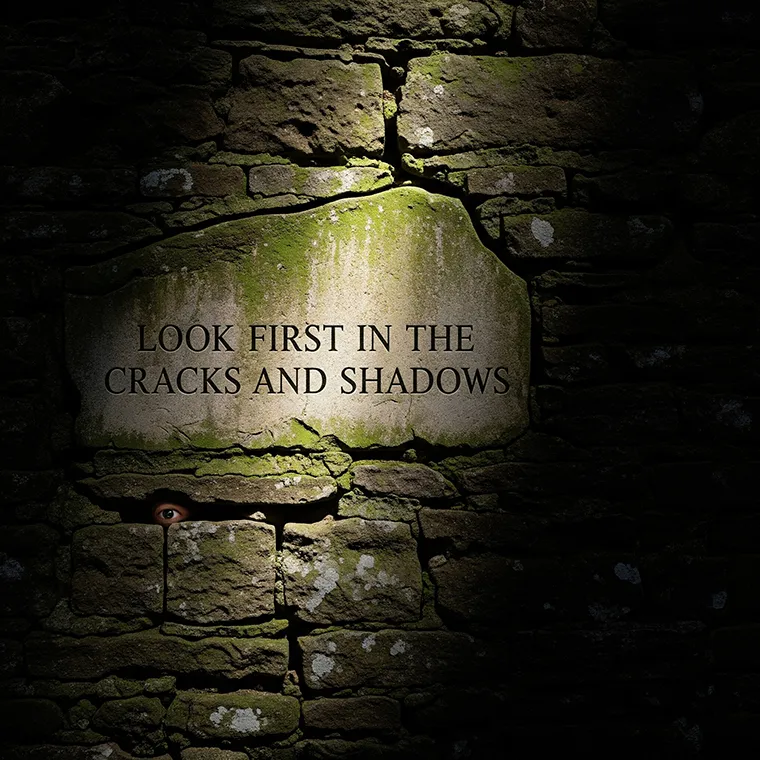
Over the next couple decades, the most important new developments are likely to happen between and across the standard categories we use to define industries and scientific disciplines. Already numerous commercial process have been created by putting pairs of disciplines together at a molecular and informational level. Animal husbandry and pharmacology have been combined into “biopharming”, which uses genetically engineered animals to produce difficult-to-synthesize drugs. Molecular biology and micro-electronics have been combined into “moletronics”, which is leading to new treatments for neurological damage. In fact, nearly every area of science and engineering is currently being applied in some novel way to solve problems that weren’t previously regarded as part of that field.
These kinds of developments can be characterized by the very fact that they are so hard to classify. Nexia, for example, is already producing an incredibly strong spiderweb-based material called BioSteel, using the milk glands of genetically engineered goats. Is this an achievement in materials science, biology, or chemistry? It’s all of these, but if you were making a survey of what has been happening recently in those separate fields, you’d be likely to miss this development altogether.
Sometimes the new technologies combine and cross disciplines in such startling ways as to seem almost comical. Neurobiologists at the University of Arizona, for example, are equipping moths with tiny transceivers wired directly into the insect’s nervous system, so that the moths become radio-controlled. The Defense Department is funding the project, because moths can smell TNT and could be used to detect land mines. A more general application will probably be agricultural pest control. Clearly the new initiatives that are bringing on the bio-economy don’t fit into the old, well-established categories.
I Dream of Genies — Don’t You?

Jeannie. Courtesy Sony Pictures Television.
This new world — a world where inert objects take on a life of their own, where life emerges where you least expect it, and where once remote categories are combined in startling ways — is the world of pop culture dreams and nightmares. One of the more benign versions of this pop culture vision can be found in Disney. The same Magic Kingdom where pixilated scientists invent the future is the one where Volkswagen Beetles take the initiative to rescue you when you’re in trouble, where fires ignite in fireplaces when you enter rooms, where furniture adjusts to make you more comfortable, and where the dishes sing “Be Our Guest”.
It’s a toy maker’s world, so it shouldn’t be too surprising that toy makers have been among the first to make this dream more real. Hasbro has a number of toys that could be used as emblems of inert matter made animate through technology. In collaboration with iRobot, for example, it is currently offering a doll called My Real Baby that reacts to the way it is treated by making appropriate sounds and using appropriate facial expressions. If you hug it, it coos. If you neglect it, it cries for attention. Gradually, as it “learns to talk”, the doll tells you how it “feels” about what it is experiencing, shaping your behavior as you shape its behavior.
As we become better at controlling our environment, our ability to step physically into a virtual reality becomes ever greater. The stimuli for an increasing range of human experiences can be stored, transmitted, and re-experienced with increasing completeness and reliably. This raises interesting questions about our ability to distinguish “real reality” from virtual reality, and about when the distinction really matters. As Overholser puts it with chilling simplicity, “Imagine a world where you can’t trust your senses or your emotions.” What would it do to people to live in such a world? Or, evoking the magnetic tape commercial, “Imagine a world where you truly don’t know, ‘Is it live or is it Memorex?’” Is this the world we are rapidly moving into?
Changing our environments is, of course, just a start. While many dream of having a genie, others are inspired by the new technology to dream of being a genie — or having a genie for a child.
Remarkable new enhancements to human life are rapidly becoming available through active implants and performance-enhancing drugs. Many of these devices are being pioneered as part of efforts to help the injured and disabled. But once they have been developed, they could easily be used to help normal, healthy people become more able. Will students in the future be forbidden to use performance-enhancing drugs when taking their SATs, the way athletes today are forbidden to use drugs when competing in sports events? Or will the use of new, safer drugs actually be encouraged, the way we currently encourage people to take their vitamins?
But why wait until humans are so fully formed as to need remedial help? Why not start the process even earlier through genetically enhanced offspring? Now that we can identify many of the genes responsible for specific traits, what’s to stop us from inserting them into embryos whose parents want to raise children with those traits? At the moment, this might seem an extreme length to go to, but what if an embryo’s genes were already going to be altered to replace some obviously defective ones? Why not add a few extra good ones at the same time?
The genes are not the only aspect of reproduction where the features of the offspring could be technologically adjusted. In addition to selecting their baby’s genes, Gio Gutierrez of the Institute for Alternative Futures suggests that people might soon be able to accomplish most of the mechanics of reproduction through ex-corporal gestation and birth. If this happened, we could face the moral dilemmas associated with the artificial wombs in Aldous Huxley’s vision of the future. Once the conditions for gestation were a matter of setting the controls, would every baby be given the same “optimum” setting? Or would some babies be given “less than optimum” settings, so they would blend in better with their communities and adjust better to their probable life styles?
Almost everything humans aspire to in their physical and mental development could be achieved more readily with the assistance of bio-engineering. But almost every form that this biological assistance could take would have some disturbing consequences.
What, Me Worry?

Should we be worried? You betcha. But worried about what? If the world is really changing in profound ways, many of our worries are likely to be misplaced. While we’re fretting about the ghosts of past dangers, real monsters could be quietly growing in places we used to think were safe. Instead of debating policies regarding reproduction and robots, where we are in danger of having too much control, maybe we should be paying more attention to the areas where we might lose control. Unintentionally released micro-weeds could upset our ecology far more rapidly and seriously than intentionally created humanoids. In the words of Stan Davis, “it’s the green goo we need to be worried about,” not the robot monsters. But how do we tell the illusory ghosts from the real monsters? And how do we prevent the real monsters from getting loose?
The fascinating and frightening thing about so many of these technical innovations is how easily and quickly the benign dream can turn into a nightmare. What does living in a virtual reality, for example, do to people mentally and emotionally? Richard Pascale, the management and technology expert, points out that it might increasingly teach people to treat all of their surroundings, including other people, as though they are virtual, with virtual emotions and virtual consciousnesses. The whole world then becomes something like a video game. For the small, but significant portion of the population that already has trouble telling what is real, this could easily result in an increasing tendency to engage in Columbine-style shooting sprees.
The story that regularly haunts us when we are presented with an awesome new technology is “The Sorcerer’s Apprentice”. Dozens of films, plays, and television dramas have retold the fable in a variety of guises. Translated into contemporary terms, “The Sorcerer’s Apprentice” is a story in which a scientist leaves an extraordinary technology in the hands of someone without a deep grasp of the underlying concepts. Like any number of technological innovations, from nuclear power to program trading, the technology gets out of hand, producing unexpected and terrifying consequences. The person who put the technology into operation has no idea of how to control it. In Goethe’s poem, Dukas’ music, and Disney’s cartoon, the scientist returns and puts things to rights. In real life, we know such a rescue is unlikely. The fable seems especially appropriate to the bio-economic revolution, because the marching broomsticks of the original have much in common with the formerly inert systems the bio-economy has brought to life.
The fact that the general population is well aware of the general danger adds another layer of worries to our more fundamental ones. In addition to the question of how comfortable we ourselves are with the new technologies, we need to consider the question of how comfortable the general population will be with these technologies.
Juan Enriquez, who has written about the impact of biotechnology in the Harvard Business Review, argues that the biggest obstacle to the wider application of genetic engineering is the public’s fear of it. This fear is already threatening the sale of genetically engineered produce by forcing its prices down and causing trade barriers to be erected to it. The result is that the application of genetic engineering to food production is in danger of being considerably slowed down. This could lead to higher food prices, which much of the world can’t afford, less nutritious food, and greater use of pesticides.
Thus, in addition to our own worries, we need to worry about the fact that other people are worried.
Tip #4: Open Everything to the Spotlight Right Away

Most of the dangers people are worrying about actually look less dangerous on closer inspection. One common fear, for example, is that genetically engineered foods will contain mysterious, alien chemicals, which will somehow cause cancer or damage our systems in other ways. But most of the chemicals in genetically engineered foods are not mysterious or alien. They are commonly occurring substances that have been extensively studied for years. Furthermore, most of the chemicals in foods altered by genetic engineering are things we eat routinely in other foods or in the same foods, but in different proportions. In sweet corn, for example, what the genetic engineers have done is reduce the quantity of the enzymes that turn sugar into starch, so that when the corn is several days old, it is chemically closer to the way it is when first picked.
Another common fear, as the new technology is introduced, is that machines will somehow become rivals to humans. Many people are frightened that machines will somehow take over human prerogatives, exhibit human consciousness, and pursue agendas at odds with human agendas.
Antonio Damasio, the distinguished neurologist, assures us, however, that the analogies between human consciousness and the properties exhibited by machines are too limited and superficial to be worth worrying about. There is a huge difference between storing the stimuli for an experience in digital form, which we already do in CDs and DVDs, and recreating the consciousness necessary to have that experience. A consciousness, Damasio argues, is so deeply bound up with its physical sub-systems that to recreate a human consciousness would be to recreate a human.
Whatever the foundations for people’s fears, a full disclosure of the new technology, its current uses, and its implications seems far more likely to reduce people’s worries, than to trigger new ones.
Executives from Monsanto have regularly argued that the general public doesn’t know enough science to evaluate information on genetic engineering and that more extensive labelling will only serve to frighten and confuse them. But since so many of the common fears are fears of the unknown, reluctance to inform the public is probably doing even Monsanto’s own interests considerable harm.
The fact that there are some serious and undeniable dangers in the new technology should make the businesses involved even more willing to accept disclosure and regulation. Even the most skeptical of researchers have suggested that there should some stringent controls on our experiments with biologically engineered organisms and with nanotechnology.
There are ways of making food pest-resistant, for example, that can introduce substances into it that humans shouldn’t eat. There are fibers producible by nano-processes that may turn out to have long-term biological effects like those of asbestos. A single bad judgement on the part of one bio-economy company could set back development for everyone. Government regulation could provide a precious service to new business development by helping to prevent this. If people in the bio-economic businesses get involved in the regulatory effort soon enough, they will be able to make sure the regulations are shaped most by the people who are most informed, not the people who are least informed.
Are We Trying to Manage Living Organisms?

By Andrei Savitsky - Own work, CC BY 4.0
The problem for business, as the bio-economy takes hold, is to find management strategies that will allow the new technologies to be applied, not just in a responsible way, but also in a highly efficient way. We shouldn’t assume that the old management strategies will survive a technological revolution of this magnitude. Most of the old strategies were introduced to facilitate the kind of mechanical heavy industry that the bio-economic technology is replacing. But what will the new ways of doing business look like?
Christopher Meyer points out that the habits of mind we develop for dealing with the bio-economy at the technical level will also affect how we organize things at the business level. Interviews with biotechnology executives by researchers from the Center for Business Innovation confirm that the language they use and the way they think about business strategy are different from what would be found in more traditional businesses.
An executive at Maxygen, for example, talked of his company extending exploratory pseudopods, as though it were an amoeba, and contemplating division when its pseudopods flowed too far in different directions. How useful are biological metaphors for understanding business in the bio-economy?
There are a host of ways in which the business organizations in which we operate resemble living organisms. They maintain a high degree of order and complexity, while constantly changing many of their components and activities. They encompass processes that are indeterminate, spontaneous, unpredictable. They explore their environment and conduct experiments that reveal the consequences of various actions. They seize and exploit opportunities in a purposeful manner. They grow. They adapt over time. They come into existence — or are born — and go out of existence — or die.
But there are also a host of ways in which business organizations are not at all like living organisms. Replication, especially replication of the same company type, carrying the same “genes”, is not the purpose of a business organization. In fact, it is usually not considered desirable. Business organizations are managed to benefit shareholders, not offspring.
Business organizations adapt and evolve to produce greater wealth, unlike organisms, where evolution does not necessarily favor systems that produce greater wealth. Indeed, what is the equivalent of wealth for an organism? Fat?
Highly networked or matrix-managed business organizations often have intersecting systems and units; whereas complex living organisms can be divided fairly unambiguously into systems, which, in turn, divide unambiguously into organs. Business organizations can be reorganized to a great extent and survive; whereas “reorganizing” a living organism to any considerable degree entails its death.
Organizational death, especially when it involves absorption into another organization, is not something a business organization necessarily wants to avoid. Organizational death does not, for example, result in the death of the organization’s parts.
Tip #5: Don’t Let Your Big Picture Be a “Picture”

Trying to fit everything into a “big picture” may only cause confusion.
Because of the huge differences between business organizations and biological organisms, analogies between the anatomies of the two are often dangerously misleading. It might sound promising, for example, to compare a business to a human body or to an individual organ within the body. But Damasio draws our attention to the fact that as soon as you try to say which part of the organization corresponds to which part of the body, you run into trouble.
Furthermore, anatomical metaphors do not guarantee or even necessarily encourage bio-economic thinking. Some years ago, a General Motors executive was heard to describe himself and the other senior management as the brains of the organization, the company’s middle management as the rest of the nervous system, the workers as the muscles, and the company’s factories as the bones and internal organs. This kind of thinking isn’t exactly conducive to tapping the creative potential of workers. It did not cause General Motors to prosper. And it is hardly what the bio-economic revolution is all about.
But this does not mean all biological analogies are wrong. Although there seem to be no good analogies between the anatomy of an organism and that of a business, analogous processes and principles abound. Damasio suggests, for example, that the problems of communicating different kinds of information are shared by both organisms and business organizations. Since human nervous systems deal very effectively with these problems by employing different kinds of channels for different kinds of information, Damasio proposes that business organizations consider something similar.
The trick in such cases is not to use the biological metaphor as an overall map or picture, but to look instead at the underlying processes. The principles that organisms and business use to solve problems might be fairly similar, even if the morphology is not. In other words, “think iso-process, not isomorphism.”
The Hollywood Style of Business Organization

The new ways of thinking, combined with the new means of production, will give rise to new kinds of business organizations. Business people who deal constantly with self-organizing, autonomous systems in their work processes will be increasingly inclined to accept and utilize similar systems in their business organizations. Meanwhile, the new kinds of business enterprises will make new demands on the teams of workers. This will make the way businesses are organized very different than in the past.
Many of the future business organizations will have hardly any permanent structure at all. Loosely organized groups will come together to tackle short-term problems only to disperse again upon achievement of their objectives. This sort of temporary, self-organized structure will often be generated within large corporations. But temporary organizational structures of this kind will also be created independently.
There are a number of existing industries that already have this sort of organizational structure that is likely to characterize the bio-economy. These industries include film production, theater, parts of the software industry, and many types of internet and high-tech start-ups.
The author of this article has been studying these industries to get a better idea of what the future of business organization might hold for all of us. All of these are highly fluid industries where most of the effort is directed at producing a prototype. The “prototype” could be a film negative, a theatrical production, a software program, an internet business model, a genetically engineered organism, or a bio-engineered process. In general, it needs to be intellectual property that is easily scalable and has the potential to produce large amounts of additional value with only limited additional investment.
In these industries, a number of individual collaborators and other relatively expensive organizational components will be assembled to cooperate in the creation of the prototype. Although the resulting organization will last only as long as it takes to create the prototype, it will often be highly complex. Time will be a crucial factor in budgeting at this stage, because the prototype will usually be worth more if it is finished sooner, and because anything that speeds the development process will reduce the amount of time the complex and expensive production organization needs to be kept together.
After the prototype has been created, the original organization will be disbanded, and a leaner, less expensive organization will be assigned the task of exploiting the prototype. All of the actual profits will be made during this later stage, after the original collaborators have moved on. Since many of the original collaborators will be paid, in part, by being given a share in the profits generated by the prototype, there will often be a wait before the collaborators are fully rewarded for their efforts.
While the less expensive organization is beginning to exploit the prototype, the original collaborators will already be working on new prototypes in different collaborative combinations. Some of the collaborators will have sustained or recurring relationships with other collaborators or with regular customers, although others might not. The ongoing relationships will often be crucial in getting a new collaborative organization assembled quickly. Everybody in this sort of business is a free agent, but there might still be unions and rules as to how various categories of contributors must be treated.
This whole style of doing business is self-organizing in the sense that the organizing impetus can come from any potential participant. Individual collaborators will often take the initiative in getting new projects underway. One part of the necessary organization will often be in place well before the others. But there are no rules as to where the project will come from or how it will get going. A project will be actually carried through to the completion of a prototype whenever it can attract enough talent or enough financing. Thus, although there are participants who are very powerful, this whole method of organizing business activity is remarkably decentralized.
Tip #6: Promote Collective, Self-Organizing Processes

To harness the power of numerous self-organizing systems, it will probably be necessary for other industries to create the conditions for something analogous to the Hollywood style of business organization. This is not just a matter of making spaces in which useful things can happen, although that’s certainly a necessary precondition. It’s a matter setting things up so that the kind of structures you want will form, and so that they will do the sort of things you need done.
You need to start by making sure the environment is seeded with the necessary components. This means making sure that people with the necessary talents are present and available. A significant portion of these people should have worked on similar projects before, so that they have an idea of how a collaborative process works. Some of the people might already be formed into working groups. These slightly larger-scale components will help the new whole to form faster, although there is a danger that the whole will be less perfectly tailored to the project at hand.
Once the necessary components are present, you need to foster connections between them. Be sure to let anyone at any level have a shot at initiating a project that could result in the required kind of prototype. As the organization begins to come together, you will want to encourage feedback between all the parts. If the structure is going to be self-modifying and self-managing, it will need the resulting information to assess how it is doing. Establish a general standard for identifying the critical mass at which a project should get the final go-ahead. This will help the emerging colony to establish a common purpose as soon as possible.
Above all, you will want to create a collaborative atmosphere. This usually means offering rewards that the individual components of the colony won’t be able to achieve alone, but which they will be able to achieve fairly readily by combining forces.
Ideally, there should be some small-scale, interim rewards, rather than just the big reward at the end. A good example here are the startup firms that compensate their workers when key milestones are reached and new rounds of venture funding are secured. The governing idea throughout should be to get the components of the organization working closely together without dictating precisely what they should do.
These principles do not have to be instituted all at once, nor is their use confined to business organizations with no permanent structure. Angus Bell of Glaxo Wellcome points out that the same policies that provide the foundation for the new business organizations will also benefit more traditional organizations. Existing organizational structures may need to be broken down or trimmed back, but they do not always need to be eliminated. The important thing is to encourage the sort of self-organizing processes associated with living things.
What It Means for Something to Bloom

Life flourishes when things are out of equilibrium and when there are gradients to be exploited. In fact, strictly speaking, life is dependent on energy differentials that are being reduced or dissipated. It exists on the border between two energy states and rides the flow between them.
Dorion Sagan, the science writer, drives the point home by saying that living things — and business ventures — are like tornados. They operate only where there is a severe pressure gradient and last only as long as the gradient lasts.
Biological growth is frequently opportunistic and explosive. This is especially true when new species are emerging and when they are occupying new ecological niches. The species that occupy a new niche first will not only make it harder for competitors to become established there; they will also have more time to become better adapted to that niche.
Biological systems will typically generate huge numbers of seeds, shoots, or other radiations, in order that a small number will survive and flourish. When this happens, the variations among new seeds or other radiations are often crucial to ensuring the success of at least some of them. Pascale reminds us that diversity in a life form allows it to evolve more rapidly and makes it less vulnerable to changing environmental conditions. In fact, if a life form lacks sufficient variation, it will often fail to have any surviving descendents.
Biological systems often accomplish seemly simple things in very roundabout ways. Take metabolism, for example. It doesn’t utilize the energy in organic molecules by “burning” them in one elegantly simple process and powering things with the resulting heat. Instead, it gradually breaks down the molecules in many complicated steps, involving numerous chemical reactions and complex physical structures.
Even today, a chemical engineer who presented a schematic diagram for a system as complicated as metabolism would be considered incompetent or insane. But the very intricacy of the metabolic process is what makes metabolism so enormously efficient. Every step captures nearly all the power it releases.
The complexity of biological processes, such as the ones found in metabolism, is also what makes them so extraordinarily robust. When one piece of the mechanism breaks down, there are generally alternative routes for reaching the same end. This is very different from the kind of design that is still most commonly admired in engineering and business.
Engineers, who seek traditional mechanical efficiencies, are taught to remove from their designs anything that seems dispensable. In this kind of engineering, redundancy is considered a luxury. In biology, it is almost the reverse: lack of redundancy is the luxury. In this respect, as in most others, biological efficiency looks very different from mechanical efficiency.
Tip #7: Look for Biological Efficiencies,
Not Mechanical Ones
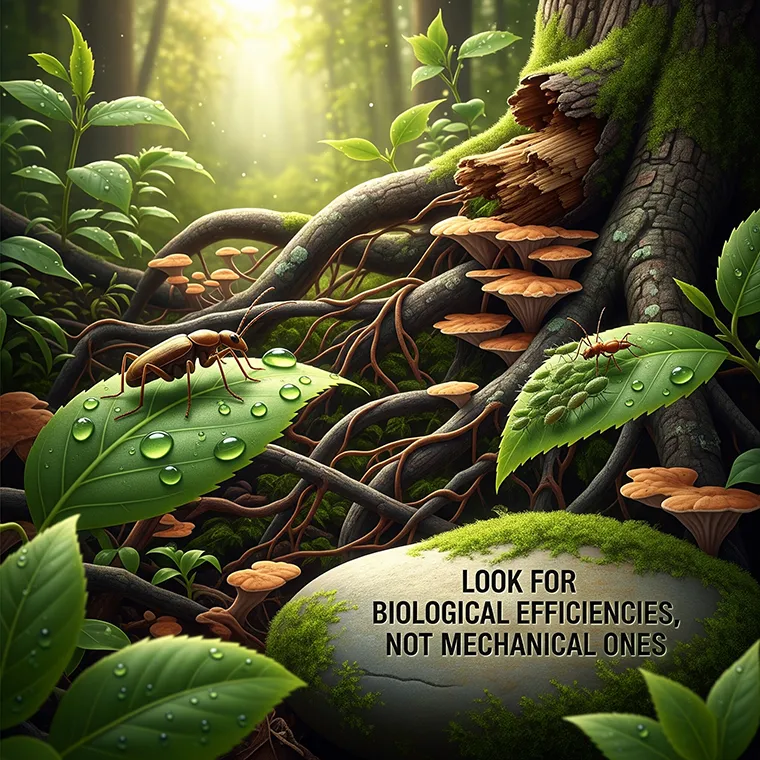
The main requirement for any business person who wants to utilize biological efficiencies is a frame of mind very different from the one that ruled industrial era businesses.
To start with, you need to think of business activities that are founded on one-time, irreversible transitions, not as unusual situations, but as the norm.
Don’t worry about creating sustained, steady-state processes. Above all, don’t hesitate to exploit a business opportunity, simply because it’s not sustainable. Instead, plan an exit strategy. Figure out how you are going to apply your resources to a succeeding project without too much downtime or too many transition costs. As Overholser puts it, “think next game, not end game.”
Don’t try to create a business that will reach a mature form and then endure with only modest changes. Instead, try to create a business that will survive by constantly transforming itself.
Be prodigal to save money and time. There are often huge benefits to be had from letting vast numbers of things proliferate, so that a few can survive. This requires a very different attitude than the practice of always aiming for a high success rate. It means utilizing “efficient waste.” The areas where this is likely to be a good strategy are those where rapid innovation and expansion is necessary.
In other words, they are moments analogous to the ones when new species expand into new niches. As you let things proliferate in the chosen areas, don’t assume that consistency is always a good thing. Encourage variance, including some extreme deviations from the norm. It is through this variance that new opportunities are created and seized.
When it comes to the things that require plans, it is important not to let these plans be shaped by the assumptions of the industrial era. Above all, don’t assume you need to keep the designs of your organization, your operations, or your products short and simple. Utilizing biological efficiencies means recognizing that large numbers of tiny parts can often be more efficient than small numbers of large parts. It also means recognizing that complex structures can often be superior to elegantly simple designs.
These principles lead to powerful new strategies for solving problems at the level of molecular technology. Researchers at the University of Wisconsin, for example, have made the first functional DNA computer chip by aiming for biological efficiency, rather than the mechanical kind.
Instead of trying to carry out one sequence of calculations with maximum speed and reliability, their strategy is to let numerous potential answers proliferate and then eliminate the wrong answers through a series of operations applied to the entire batch.
Researchers looking for new drugs have recently been employing a similar strategy. They start with large populations of potentially useful molecules. Then, by a mixture of chemical and computational process, applied in successive steps to the entire batch, they gradually eliminate the molecules less likely to be effective.
The same principles can be equally beneficial at the level of business organizations, especially when it comes to creating and sustaining innovation.
As we move out of the industrial era, businesses as different as Boeing and Novartis have discovered that having an elegantly simple flow chart or a cleanly rational organizational schematic can be counterproductive when it comes to developing new products. Their most intricate operations — the ones that would have generated the messiest flow charts — have often proved to be their most efficient ones.
Information Is Still the More Fundamental Reality

The fact that the bio-economy is moving beyond the information technology economy doesn’t mean that information is becoming any less important. On the contrary, information — especially, functionally operative information — is the key to the bio-economy.
If physical processes and information processes are merging, then information becomes a crucial aspect of everything. Focusing on the information, in the bio-economy, is really just a way of focusing on how things are structured. The things that contain the greatest density of usable information — whether genetic DNA, human brains, or electronic data bases — are the things that have the greatest capacity to structure other things. In fact, information, if its usable, is essentially the power to structure things.
The success of both organisms and businesses depends on how they are handling information. To tell if an organism is adapting and evolving successfully, you have to look at what’s happening to its genetic material. To tell if a business is adapting and evolving successfully, you have to look at what’s happening to its intellectual resources.
The bio-economy makes the role of information in business more conspicuous than ever before. If a business is going to exploit one-time, irreversible transitions, and if it is going to be radically reorganized for each project, then the way it preserves and manages information becomes crucial. Indeed, when a business is reorganized in a truly thoroughgoing way, often the only thing that will be preserved, apart from the company’s name and its legal shell, will be a nexus of operative information.
Information can survive the death of a business, just as genetic material can survive the death of an individual organism.
The components of a businesses often stand to gain when the business is dismantled, not in immediate financial ways, but in the freeing of intellectual resources. “When should businesses die?”, you ask. “A lot sooner than they do”, says Overholser, speaking in his role as a venture capitalist for Capital One.
Businesses operating after they should have been shut down are not just wasting physical and financial resources; they are also wasting information. Often when a business dies, the information that’s released will actively help its successor businesses to flourish.
Tip #8: Expect the Value to be in the Source Codes
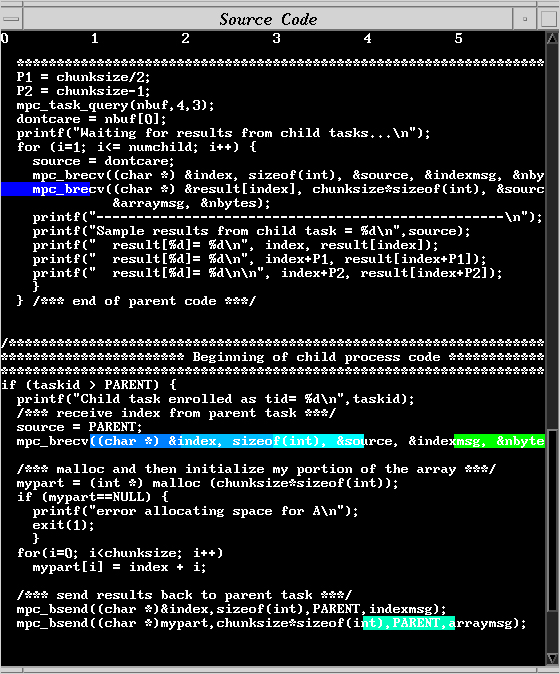
Biotechnology will make the patterns of investment and return for industrial production look like the patterns for software production. Large investments will be needed to produce the prototype, but remarkably small additional costs to reproduce and deploy it.
Any asset or component of a company that becomes a repository for information will tend to have a much larger and more enduring value than other assets and components. But in the bio-economy, the information assets won’t just be data bases, patents, and expert personnel.
Juan Enriquez, for example, draws attention to the fact that seed companies have soared in value over the last few years, because seeds are repositories of information. Anything else that can function as a “seed” will have a similar importance.
Managing information in the bio-economy will become even more critical than in the era of information technology. The most valuable assets of a company, apart from the combined expertise of its employees, will often be ideas and data that could literally be transmitted electronically at high speed to any part of the world. Yet identifying these assets and channeling them in useful directions will be very tricky.
Sharon Oriel reports that, in her job managing intellectual assets for Dow Chemical, the biggest problem is often figuring out what those intellectual assets are and where they are located. As businesses are more and more frequently reorganized, restructured, acquired, or divested, the only way to be sure of coming out ahead will be to keep track of where the operative information is going and what’s being done with it.
When Robots Get the Vote
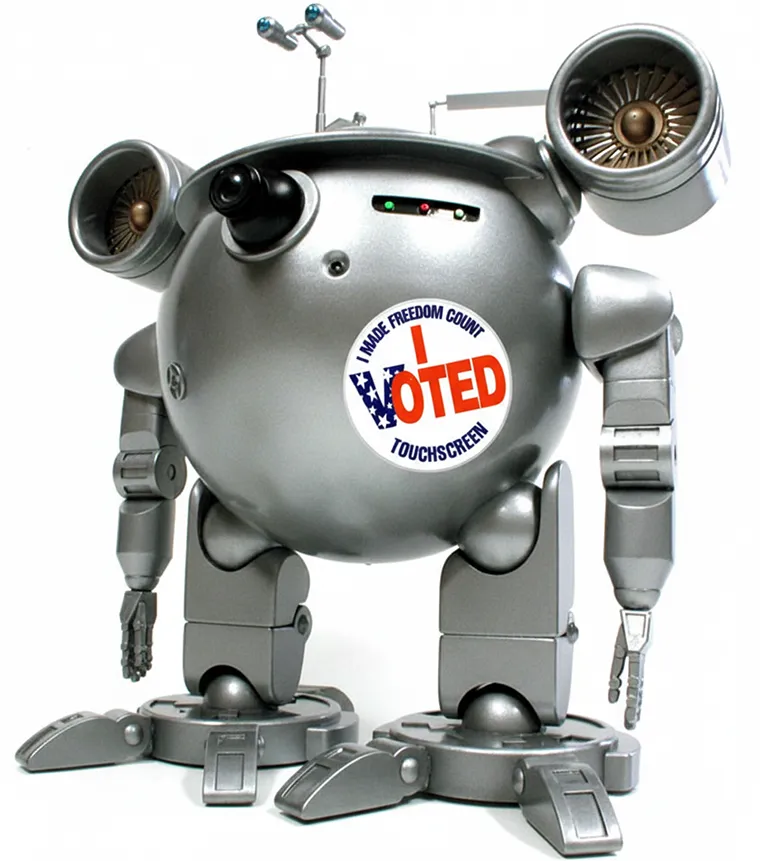
All this, of course, has some dramatic political implications. The political effect of the bio-economy will be not just “power to the people”, but “power to the networks”. Dispersed, self-organizing groups will become increasingly important. In the near future, they may even be able to exert more influence than the highly centralized organizations and massive concentrations of capital that have dominated public policies throughout the recent industrial age.
Already, people who agree on a political agenda can mount well-coordinated collective actions with no central organization, no formal plan, and no administrative system, apart from the internet itself. The protesters targeting the World Trade Organization meeting in Seattle were only the best publicized of many recent examples.
Meanwhile, automated systems will make their influence felt more directly in public affairs. They will not just be a means of communication or a tool for groups that are already committed to a political agenda. The automated systems will themselves be shapers of policy. Public oversight and the guarding of public interests will be increasingly facilitated by “bots” and other automatic agents. Automated systems will increasingly become the arbiters of whether things have been done properly and whether our shared values are being served. As people see the merits of their contributions, the intelligent systems will themselves be accorded considerable respect, almost as though they were groups of animate beings.
Sherry Turkle of MIT tells us this effect will be reinforced by people’s tendency to form emotional relationships with anything that behaves as though it possesses consciousness. Future political analysts will not just discuss which policies the people support or the corporations support, but also which ones the automated systems support.
The rise of networks and automated systems could even reshape the formal boundaries of our democratic institutions.
Nova Spivack of Lucid Ventures goes so far as to suggest that the new kinds of production associated with the bio-economy will result in new kinds of political units. He imagines countries breaking into numerous, separate political entities, some coinciding with geographical regions, but others residing in no particular locality at all. Furthermore, these political units might regularly dissolve and regroup, so that the entire geopolitical landscape becomes permanently fluid. This would make our formal political institutions more like the decentralized, self-organizing systems that will characterize other aspects of the bio-economy.
While these kinds of changes are going on, the old systems of corporate governance developed for the industrial economy will be increasingly at odds with the new public interests and with the new ways of doing business.
Dean LeBaron, founder of Ballerymarch Financial, claims that the most urgently needed reforms are the ones that would make corporations more transparent. He argues it should be easy for anyone who is interested to get information on directors’ votes, questions from analysts and shareholders, the reasoning behind corporate decisions, and a wide variety of other things that are currently kept secret. This information, in turn, would lead to other, more structural reforms. Only in this way, LeBaron maintains, will corporations be able to adjust to the dislocations that will come with the rise of the bio-economy.
Tip #9: Don’t Assume Politics Will Remain Less Changed Than Business

The big lesson here is to be careful about extrapolating current political conditions into the future. In particular, don’t assume that the social or regulatory environment you are dealing with now — whether favorable or unfavorable — will still be the same in a few years time.
These things are likely to change as much as the technology to which they are responding. The current conflicts between innovative business practices and public institutions will probably in large measure disappear — perhaps to be replaced by others. Meanwhile, corporate regulation and corporate governance will be accomplished in different ways and have different consequences.
Monitoring the Arrival of the Bio-Economy
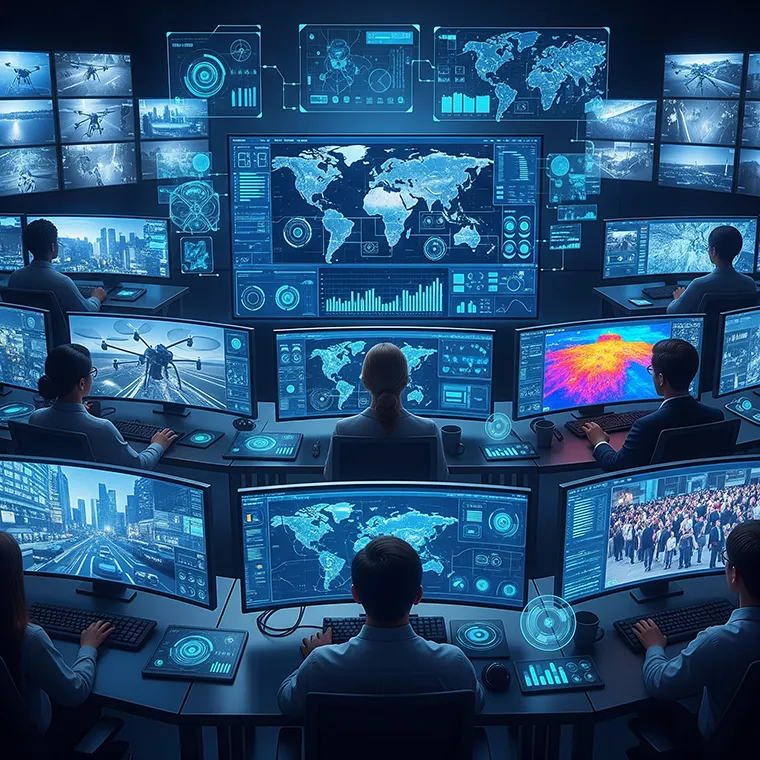
Stan Davis and Christopher Meyer anticipate that the bio-economy will arrive in three waves: a biotech wave, a materials science wave, and a nano-machine wave. These three waves will overlap. In fact, there are functioning examples cited in this article that belong to each of these waves. But the peaks of these waves are likely to come in this order.
The biotech wave is the first to arrive, initially yielding new drugs, better foods, better medical testing, and cheaper ways of producing all these things. As the biotech wave gains momentum, it will generate better and cheaper ways of producing an increasingly wide range of materials and other products. Gradually, genetically engineered organisms will be created that are capable of producing substances very different from any naturally occurring organic compounds. When this happens, every remaining area of material production will be transformed by the bio-economy.
The materials science wave will come next and with it the production of new materials with properties that go beyond those of any materials that have previously existed. Many of the products of the materials science wave will be substances associated with nanotechnology, but they won’t require anything more than the most rudimentary nano-machines for their fabrication. Mostly they will be created by physical processes that involve self-extending or self-catalyzing substances. As the materials science wave proceeds, the distinction between biological processes and mechanical process at a nanoscale will become increasingly blurred.
The nano-machine wave will be the culmination of the bio-economic revolution. It will be characterized by mechanical devices with multiple components that operate at a molecular scale.
In the early phase of the nano-machine wave, the molecular scale machines will be relatively simple. Mostly, they will be devoted to fabricating materials that can’t easily be produced by other techniques, because they are not self-extending and require more than simple catalysis.
In the middle phase, nano-machines will be used to perform tasks that are more complicated and that require them to operate in more complicated environments. This is the phase at which nano-machines will be used to clean out arteries and repair human tissues.
In the final phase of the nano-machine wave, the molecular scale machines will become self-replicating. This self-replication will first become possible in extremely special, artificially constructed environments, where all the necessary components are present, and where there are a minimum of obstacles. Later, self-replication may also become possible in less special, naturally occurring environments, but this level of technology will be vastly harder to achieve.
Tip #10: Watch for the Tipping Points in
These Technological Waves
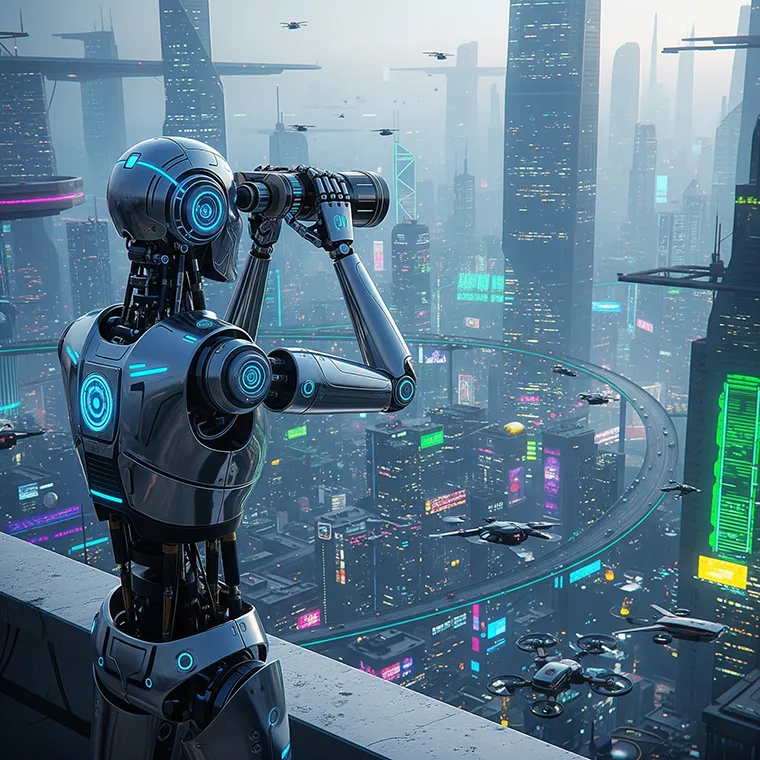
The big unanswered question is how long it will be before these three waves and their successive phases make their effects felt. It is not safe to assume that the time spans here are large.
Our experience with information technology, and especially with the internet, has taught us how fast things can change. It took personal computers less than a dozen years to transform the business world. It is taking the internet even less long. Portions of the bio-economic revolution could come on just as fast, and probably will.
But it would also be dangerous to assume that every stage of the bio-economic revolution will move along quickly.
If we have recently witnessed many technologies developing faster than anyone could have imagined, we have also witnessed technologies that started off well and then, for a variety of reasons, stalled. Computers have seemed on the verge of accomplishing things like machine translation and speech recognition for over thirty years. Yet there are still huge obstacles in those fields that need to be overcome. Space travel is perhaps an even more striking example. When the first two manned spaceflights landed on the moon in 1969, was there anyone who would have believed we would still be preoccupied with sublunar orbital missions over thirty years later?
In short, there is no safe, conservative approach to preparing for the coming bio-economy. If you assume it will happen slowly, you are likely to be wiped out by a wave of technology you never saw coming. But if you bet your company’s future on the rapid arrival of any single phase of the bio-economic revolution, you may go under before you catch the wave.
There is really no answer, except to anticipate the kind of things that are likely to happen and to watch closely for them. The successive waves of the bio-economy will produce a number of tipping points at which business conditions will abruptly change.
One type of tipping point will come when the waves of technology first break into new domains. These are the tipping points that will typically occur in laboratories, where technical breakthroughs are achieved for the first time.
Another type of tipping point will come when the successive waves of technology become economically viable in the domains the technology has entered. Estimating where we are between these two will be one of the greatest challenges for anyone developing a new business enterprise, but this is also where the greatest opportunities will lie.
Conclusion: The Big Themes Underlying All These New Developments
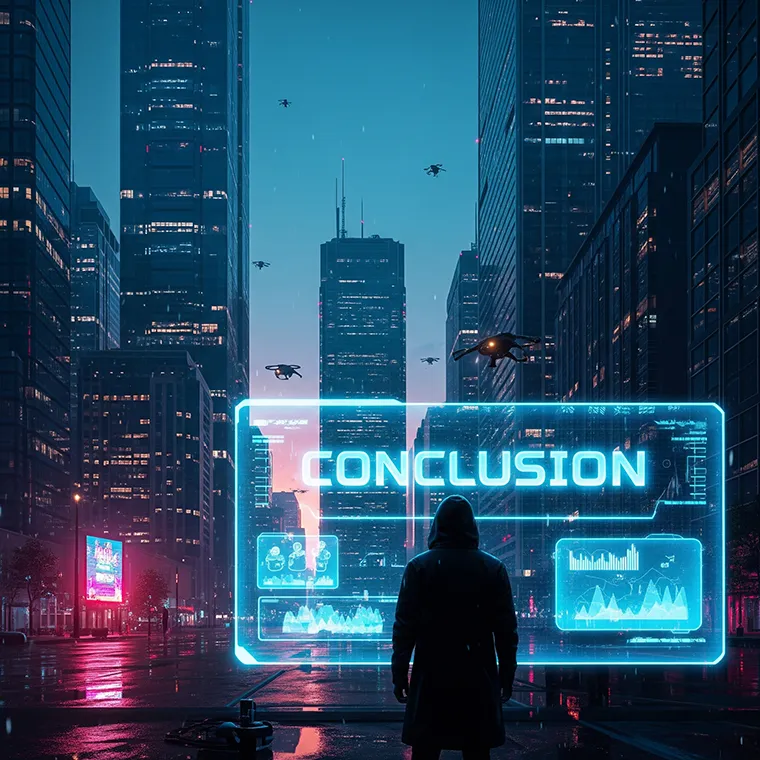
If we step back and try to take a long-range view of these developments, there are three big themes that emerge. These themes are not unique to the bio-economy. They were already becoming conspicuous in the economy generated by information technology. But as we move into the bio-economy, all three themes seem to be coming into their own as never before.
The first big theme is that everything, in the future, will be saturated with ideas. This is not just a matter of information permeating everything. It’s a matter of thought or concepts dominating the economy in a new way. Because the bio-economy is founded on the merging of physical processes and information processes, the way information is organized becomes even more important than it was in the era of information technology. This has significant consequences for the kind of people who will end up running things.
If the information technology economy seemed like nerd heaven, the bio-economy will be ultra-nerd heaven. Being “intellectual” still won’t be a good way to get rich. But being anti-intellectual will be a very good way to get poor. In the bio-economic world we are moving into, ideas matter more than material things, even if you want to accumulate material things. Materialism, in other words, is dead. Idealism, at least a kind of “cybernetic idealism”, is what rules.
The second big theme is that everything will be recognized to depend on creativity. This new emphasis on creativity in business can already be seen in all the recent talk of “moving beyond zero-sum games”.
But the bio-economy will make it increasingly obvious that all viable businesses are about creating value, not just shifting it around. Those who think “there’s nothing new under the sun”, or they’ve “heard it all before”, will discover they’ve become irrelevant long before they figure out why. Meanwhile, the truly creative will find that the development of unique prototypes in numerous areas of business will gave ample scope to their talents.
The third big theme is that everything will become increasingly individualized.
This, too, is something that was already happening as a result of information technology. For several years now, there has been talk of “mass customization”, of “personalizing” information media and advertising, and of providing “unique solutions.” But the bio-economy takes this to a whole new level.
Kathryn Johnson of Health Forum points out that the bio-economy will rapidly result in the increasing customization of nearly everything having to do with an individual’s health. From there, she says, the new customization will soon spread to other aspects of human life.
Dan Teitelbaum of Bios Group predicts, “Product differentiation will be so complete, everyone will get a unique product every time they buy something.”
Jordan Pollack, the celebrated robot designer at Brandeis University, predicts there will soon be automatic design systems that will design individual products for individual customers, even if no similar product exists. This new automation could hardly be further away from the uniformity associated with industrial machines. In this new business environment, looking for the lowest common denominator — or indeed, for any “universal need” — will be a good prescription for business failure. Business in the bio-economy will cater to individuality as never before.
One of the things that makes these themes stand out is that business is moving toward a deeper appreciation of ideas, creativity, and individuality at a time when these concepts have gone completely out of fashion in much of the academic world.
In the humanities, social sciences, and arts, throughout much of America and Europe, ideas are currently being cynically dismissed as the rationalizations of special interests. Materialism, especially marxist materialism, is regarded as more realistic than theories that emphasize thought.
The idea that people are capable of radical creativity, introducing something new and making a break with the past, is viewed with great skepticism. Above all, individualism is widely regarded as bad or as an illusion. Tailoring things to individual humans is regarded as politically suspect. Attributing great consequences to the thoughts or actions of individuals is thought to be naive or reactionary.
Business, as we move into the bio-economy, is becoming the sector of American and European life that appreciates ideas, encourages creativity, and celebrates individuality. It’s taking the liberal humanist tradition of the West to a higher level at the very point when the liberal arts and humanities seem to have given up on it. There is a great irony in this for anyone old enough to remember the “corporate man” of yesteryear. There is also an important clue to the future. For it’s business today, more than academia or the arts, that is making the future happen.